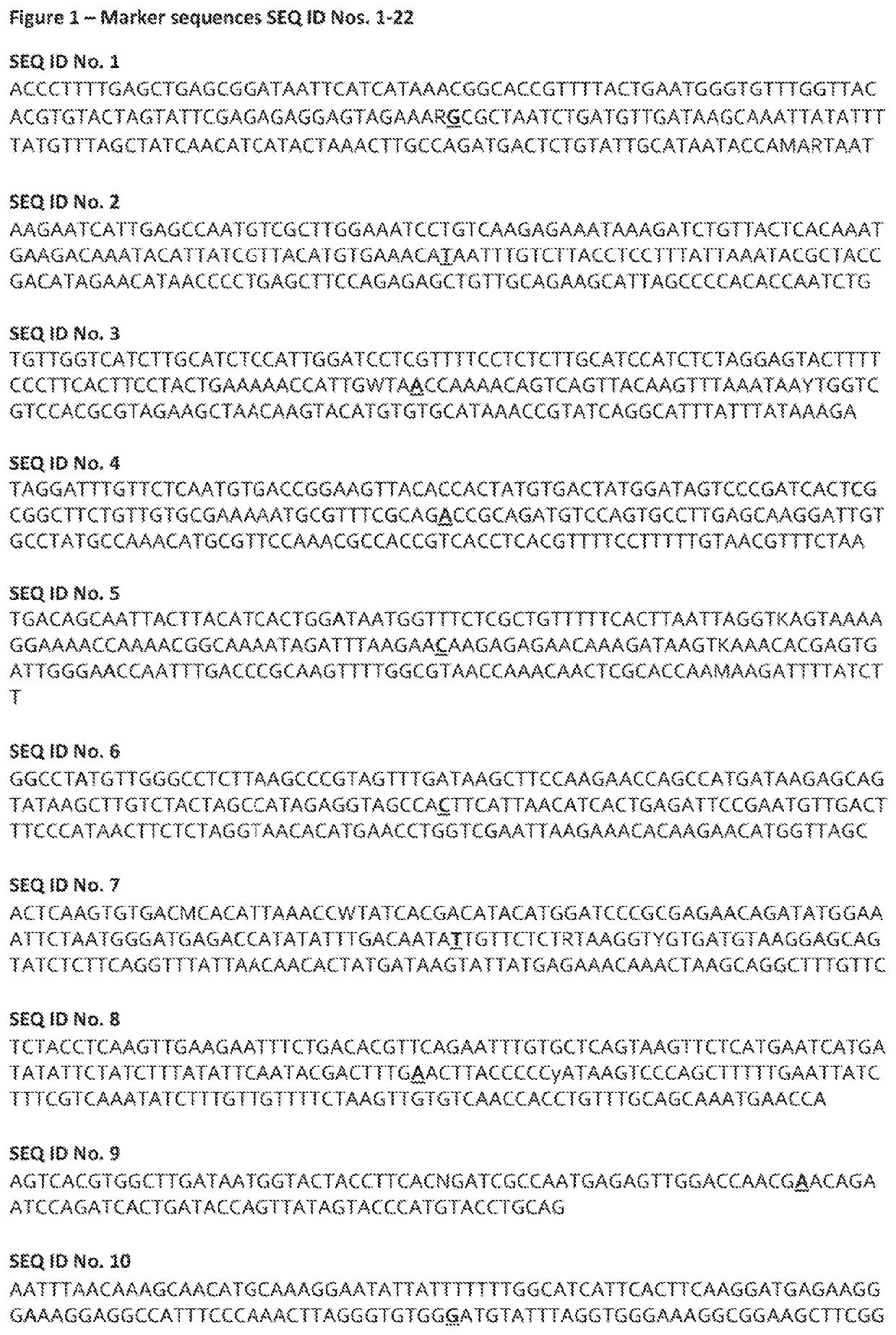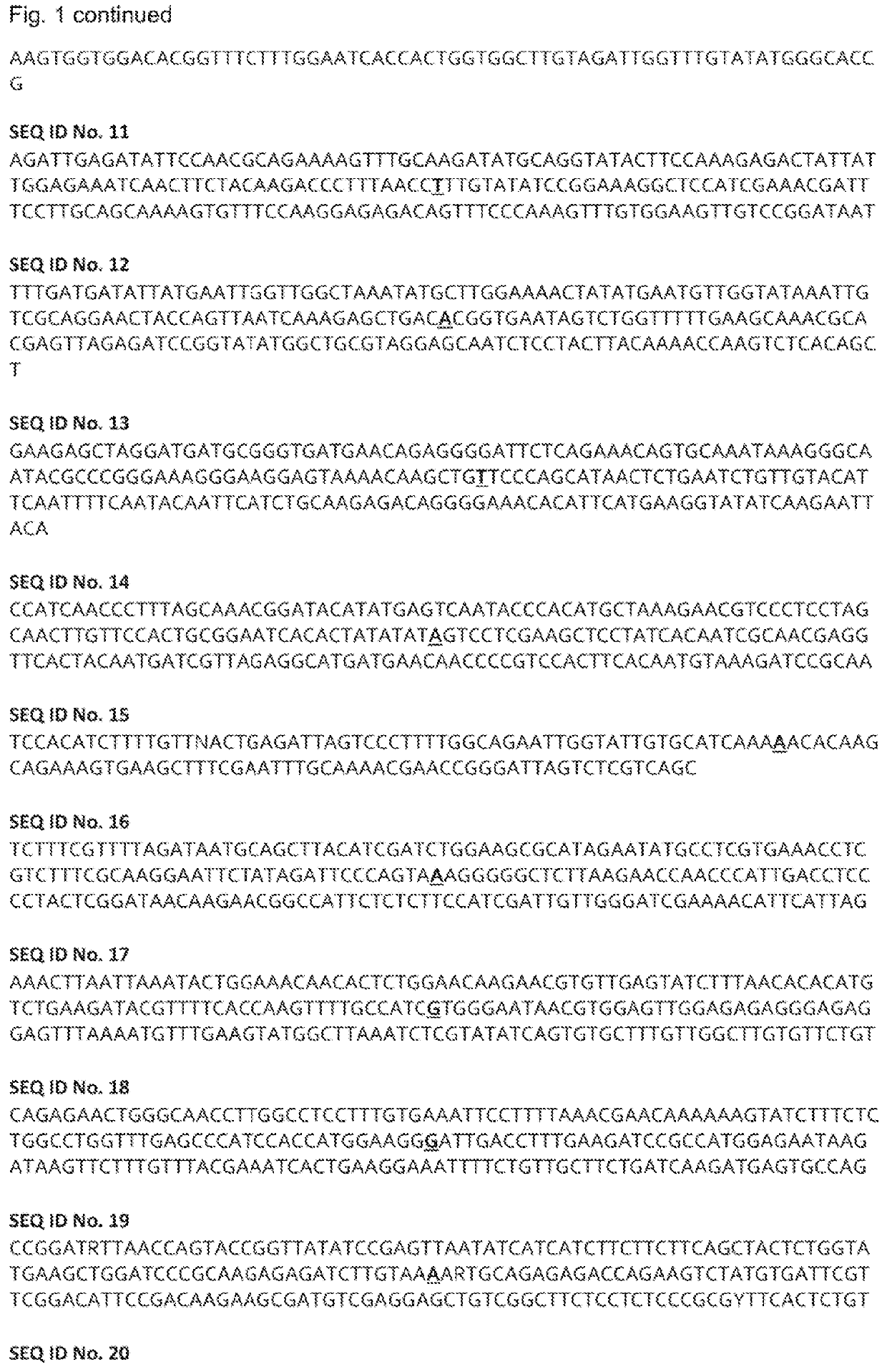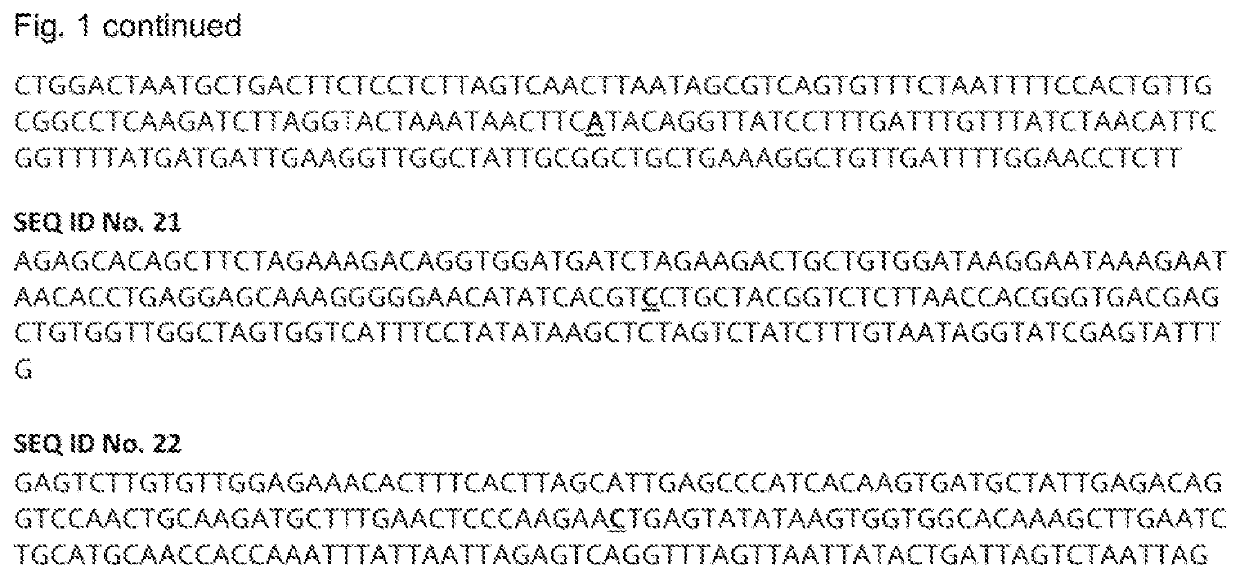Brassica plant resistant to downy mildew
a technology of downy mildew and brassica, which is applied in the field of brassica plants, can solve the problems of low phylogenetic similarity of the appearance of the brassica plant, damage to the quality of the leaves, stems and the plant head, and cultural practices and/or chemical treatments that have failed to protect the crops or have proved too expensive, and achieves a higher level of resistan
- Summary
- Abstract
- Description
- Claims
- Application Information
AI Technical Summary
Benefits of technology
Problems solved by technology
Method used
Image
Examples
example 1
[0156]Hyaloperonospora brassicae Resistance Testing of Brassica Plants
[0157]To test whether a Brassica plant is resistant to Hyaloperonospora brassicae, a bio-assay was performed. About 20 seeds per plots were sown and one row between two plots was left empty. Brassica plants were grown under standard Dutch greenhouse conditions at a temperature regime of 15° C. / 15° C. night / day. At 10 days after sowing the cotyledons were sprayed with the sporangial suspension of “isolate 2”. The isolate of Hyaloperonospora brassicae was maintained on living Hyaloperonospora brassicae susceptible Brassica plants. The inoculated cotyledons were incubated under controlled conditions being a 12° C. / 14° C. night / day regime. Each plant was visually scored according to Table 1 at 7 days and 14 days after inoculation to phenotypically identify Hyaloperonospora brassicae resistant Brassica plants. This screen identified a number of Hyaloperonospora brassicae resistant Brassica plants, of which one was sele...
example 2
QTL Mapping
[0159]In order to map the Hyaloperonospora brassicae resistance conferring QTLs of the invention, F2 populations with two different backgrounds and two F3 populations were developed by though backcrossing of an internal susceptible line and the plant selected in Example 1. The Brassica plant of the invention is the donor parent for the trait of the invention, whereas the internal susceptible line is the wild type line that does not show resistance to Hyaloperonospora brassicae.
[0160]A first F2 population was developed with the plant selected in Example 1 and the internal susceptible internal breeding line 2 which is a broccoli plant (Brassica oleracea var. italica Plenck). 351 F2 plants were used for the mapping with a first Hyaloperonospora brassicae isolate (isolate 2). A large number of 823 markers were run on the samples. From these, 729 could be used for mapping as the others were non-polymorphic or otherwise non-informative. The mapping data resulted in the identif...
example 3
Confirmation of the QTLs
[0166]The selected Brassica plant of Example 1 was crossed with an internal breeding line (internal breeding line 1) which is a cauliflower plant (Brassica oleracea var. botrytis L.) plant. F1 plants from these crosses were grown and F2 seeds were also obtained. The F2 plants were crossed again with the internal breeding line 1 in order to obtain F3 plants that carried the QTL of the invention on chromosome 8, the QTL of the invention on chromosome 4 and the QTL of the invention on chromosome 1 either homozygously or heterozygously or the plant did not carry the QTL(s) of the invention. A new screen was performed with three different Hyaloperonospora brassicae isolates herein called isolate 1, isolate 2 and isolate 3 and the average scores are represented in Table 4. The plants were phenotypically scored with the scores as represented in Table 1, 7 and 14 days after the infection with the Hyaloperonospora brassicae isolates.
[0167]Plants that do not comprise t...
PUM
| Property | Measurement | Unit |
|---|---|---|
| resistance | aaaaa | aaaaa |
| brassicae resistance | aaaaa | aaaaa |
| size | aaaaa | aaaaa |
Abstract
Description
Claims
Application Information
 Login to View More
Login to View More - R&D
- Intellectual Property
- Life Sciences
- Materials
- Tech Scout
- Unparalleled Data Quality
- Higher Quality Content
- 60% Fewer Hallucinations
Browse by: Latest US Patents, China's latest patents, Technical Efficacy Thesaurus, Application Domain, Technology Topic, Popular Technical Reports.
© 2025 PatSnap. All rights reserved.Legal|Privacy policy|Modern Slavery Act Transparency Statement|Sitemap|About US| Contact US: help@patsnap.com



